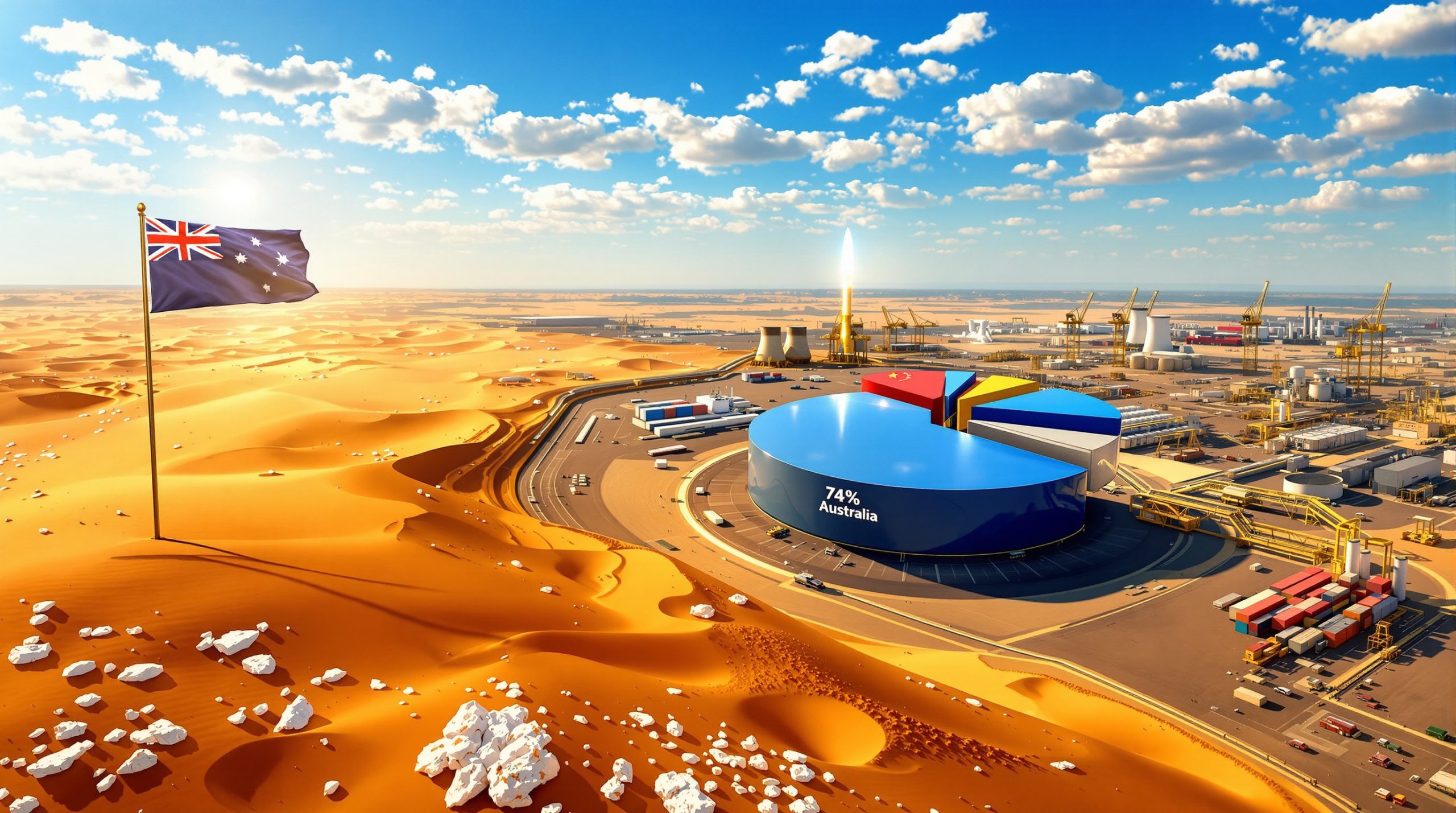What is Mining Waste Management?
Definition and Types of Mining Waste
Mining waste management encompasses the processes and technologies used to handle, treat, and dispose of materials generated during mineral extraction and processing operations. These wastes include tailings (fine-grained materials left after ore processing), waste rock (non-mineralized rock removed to access ore bodies), and metallurgical wastes like slags from smelting operations.
The mining industry employs approximately 250,000 workers globally and generates around $7 billion annually in commodity exports. However, this economic activity comes with significant waste generation—for every ton of usable minerals extracted, mining waste management operations can produce up to 100 tons of waste material.
Why Mining Waste Management is Critical
Effective mining waste management is crucial for multiple reasons. First and foremost, it protects ecosystems from contaminants like heavy metals, acids, and processing chemicals that can leach into soil and waterways. The environmental impacts of improperly managed mining waste can persist for decades or even centuries.
The health and safety of mining communities also depend on proper waste management. Communities near mining operations face increased health risks from air pollution, contaminated water supplies, and potential catastrophic failures of waste storage facilities.
From an economic perspective, the mining sector contributes approximately $17 billion to global GDP, with waste reprocessing alone generating $1.3 billion in annual revenue. These figures underscore both the financial significance of the industry and the economic opportunity presented by more sustainable waste management approaches.
Traditional Mining Waste Management Approaches
Conventional Disposal Methods
Historically, mining companies have relied on several disposal methods for waste materials. Tailings, the most voluminous mining waste, are typically stored in large impoundment structures called tailings dams. These engineered facilities hold the slurry of finely ground rock and water that remains after mineral processing.
Waste rock is commonly piled in large heaps near mine sites, while other solid wastes may be disposed of in landfills specifically designed for mining waste. Some operations still practice open dumping, though this approach is increasingly restricted due to environmental concerns.
Limitations of Traditional Methods
Traditional waste management approaches suffer from significant limitations. Tailings dams are vulnerable to structural failures, as demonstrated by catastrophic breaches like the 2019 Brumadinho dam disaster in Brazil that killed 270 people and caused extensive environmental damage.
Even when containment structures remain intact, traditional disposal methods can lead to acid mine drainage when sulfide minerals in waste materials oxidize upon exposure to air and water, creating acidic conditions that mobilize heavy metals. This contamination can persist for centuries after mine closure.
The conventional approach also represents lost economic opportunity. Mining waste often contains recoverable minerals that could generate additional revenue while reducing the overall waste footprint. The long-term monitoring and maintenance costs of traditional disposal sites further diminish their economic viability.
Emerging Trends in Mining Waste Management
Sustainable Mining Practices
The mining industry is increasingly adopting sustainable practices that minimize waste generation from the outset. These include selective mining techniques that more precisely target ore bodies, reducing the amount of waste rock produced. Advanced ore sorting technologies allow companies to separate valuable material earlier in the process, decreasing the energy and water required for processing.
Circular economy principles are gaining traction, with mining companies seeking ways to transform waste streams into valuable products. Industry-academic partnerships are accelerating innovation in this space, developing solutions like geopolymer concrete made from mining waste that can reduce carbon emissions in construction applications.
Zero-Waste Mining Approaches
The concept of zero-waste mining represents the industry's aspirational goal—minimizing or eliminating waste through improved resource efficiency. This approach incorporates real-time monitoring systems that optimize extraction and processing to reduce waste generation at the source.
Closed-loop water systems are a key component of zero-waste mining, recycling process water to minimize freshwater consumption and prevent discharge of contaminated effluent. Some advanced operations are achieving over 90% water recycling rates through these systems.
Renewable energy integration further reduces the environmental footprint of waste management activities. Solar-powered water treatment systems and wind-powered monitoring equipment decrease operational costs while improving sustainability performance.
Geochemical Engineering Solutions
Geochemical engineering approaches are transforming how mining companies manage potentially hazardous waste materials. Bioremediation technologies use naturally occurring microorganisms to break down contaminants in mining waste, while phytoremediation employs plants to extract, immobilize, or degrade pollutants.
Advanced chemical treatments can neutralize acid-generating potential in waste rock and tailings, preventing acid mine drainage before it starts. Biodegradable polymers are being developed to improve the stability of tailings storage facilities, reducing the risk of structural failures.
Ozonic technology represents a promising chemical-free water treatment method, using ozone to oxidize contaminants without introducing additional chemicals to the environment. This approach can reduce treatment costs while improving water quality outcomes.
How Can Mining Waste Be Transformed into Resources?
Tailings Reprocessing Technologies
The reprocessing of tailings deposits represents a significant opportunity to recover valuable minerals while reducing environmental liabilities. Modern extraction technologies can recover metals from tailings that were uneconomical to process with previous methods or contain minerals that weren't targeted in the original operations.
A notable case study comes from Nevada, where companies are extracting substantial amounts of gold and silver from historic tailings deposits using more efficient leaching methods. These operations have recovered up to 75% of the remaining precious metals while simultaneously reducing environmental risks from the original waste.
R2 (Reuse and Reprocessing) technology implementations are gaining traction globally, with mining companies investing in advanced separation techniques, including gravity concentration, flotation, and hydrometallurgical processes, to extract value from waste streams.
Phytoremediation Applications
Phytoremediation—using plants to remove, stabilize, or destroy contaminants—offers a cost-effective approach to rehabilitating mining-affected lands. Hyperaccumulator plants can concentrate metals from soil at levels 100 times higher than normal plants, effectively cleaning contaminated areas while potentially producing a "crop" of harvestable metals.
An instructive case study comes from the Amazon basin, where native plants are being used to restore former gold mining sites. These plants not only absorb contaminants but also rebuild soil structure and support biodiversity recovery, demonstrating the multiple benefits of nature-based solutions.
The integration of phytoremediation with biodiversity conservation creates opportunities for mining companies to transform waste management costs into ecological restoration investments that generate positive environmental and social returns.
Construction Materials Development
Mining waste materials increasingly serve as valuable inputs for construction applications. Tailings can replace up to 40% of cement in concrete mixtures, reducing both waste disposal requirements and the carbon footprint of construction projects.
Waste rock and processed tailings are being transformed into bricks, pavers, and road-building materials, creating local economic opportunities in mining regions. These applications can consume large volumes of mining waste while producing marketable products.
The economic benefits are substantial—construction materials derived from mining waste typically cost 20-30% less than conventional alternatives, creating market incentives for adoption beyond environmental considerations.
What Technological Innovations are Reshaping Mining Waste Management?
Automation and AI Integration
Artificial intelligence and automation are revolutionizing mining waste management through improved monitoring, sorting, and processing capabilities. AI in mining can analyze real-time data from sensors embedded in tailings dams, predicting potential issues before they become critical failures.
Advanced sorting technologies using machine vision and AI algorithms can separate valuable minerals from waste with unprecedented precision, increasing resource recovery while reducing the volume of material requiring disposal.
Three-dimensional mapping and modeling technologies provide detailed understanding of waste deposit characteristics, enabling more effective management strategies and resource recovery efforts. These digital twins technology of waste facilities allow companies to simulate different management scenarios and optimize their approaches.
Advanced Water Management Systems
Water management represents one of the most critical aspects of mining waste management. Leading companies are implementing zero freshwater consumption strategies that fully recycle process water and collect precipitation to eliminate the need for external water sources.
Liquid membrane technology offers a promising approach for selectively removing contaminants from mining wastewater, enabling more efficient water recycling while reducing treatment costs. These membranes can be customized to target specific pollutants common in mining operations.
Real-time monitoring systems for water quality parameters allow mining companies to identify and address issues promptly, preventing contamination events and ensuring regulatory compliance. Some advanced systems can detect contaminants at parts-per-billion levels, providing early warning of potential problems.
Dust Suppression and Air Quality Technologies
Airborne dust from mining waste facilities represents both an environmental hazard and a lost resource opportunity. New ventilation systems with continuous air quality measurement help mining companies manage dust within processing facilities and at waste storage sites.
Polymer-based dust suppressants provide longer-lasting dust control than traditional water spraying, reducing water consumption while improving air quality. These biodegradable products can remain effective for months, even in challenging climatic conditions.
Enclosed conveyor systems and covered storage facilities minimize dust generation from waste handling operations, protecting worker health and reducing community impacts. The most advanced systems capture dust for reprocessing, turning a nuisance into a resource.
Regional Case Studies in Mining Waste Management
Saudi Arabian Mining Sector Initiatives
Saudi Arabia is positioning mining as the third pillar of its industrial strategy, alongside petroleum and petrochemicals. The kingdom's vision includes accelerated growth of the mineral value chain, with sustainable waste management as a key component.
The country's diverse mineral resources—including gold, copper, and phosphate—are distributed across several geological provinces, creating opportunities for regional waste management approaches that leverage economies of scale. Future demand projections indicate substantial growth in mining activity, necessitating advanced waste management planning.
Saudi Arabia is investing significantly in research and development for mining waste technologies, focusing on solutions adapted to arid environments. These include dry stacking of tailings to conserve water and reduce the risk of dam failures, along with solar-powered monitoring systems for remote waste facilities.
International Best Practices
Portugal has emerged as a leader in the digital transformation of industrial mining operations, implementing comprehensive monitoring networks for waste facilities that transmit real-time data to regulatory authorities and community stakeholders, building transparency and trust.
Japanese companies have pioneered robotic technology applications for mining waste management, developing autonomous systems that can safely inspect and maintain tailings dams, reducing human exposure to hazardous conditions while improving monitoring effectiveness.
Germany's innovation programs have established smart factory concepts for mineral processing that minimize waste generation through precision control and real-time optimization. These systems have demonstrated waste reductions of up to 35% compared to conventional processing approaches.
Indian nanotechnology applications are advancing across multiple aspects of mining waste management, from nanomaterial-enhanced filtration systems for water treatment to nanoparticle-based sensors for contaminant detection. These technologies offer improved performance with reduced material and energy requirements.
What Challenges Exist in Implementing Advanced Waste Management?
Economic Barriers
The high upfront costs of implementing advanced waste management technologies remain a significant barrier, particularly for smaller mining operations. Initial investments in technologies like automated sorting systems or advanced water treatment facilities can reach tens of millions of dollars, requiring long-term financial planning.
Research and development investments are essential but challenging to justify when commodity prices are low. The industry's cyclical nature can interrupt innovation efforts, delaying the implementation of promising waste management solutions.
Cost-benefit analyses for advanced waste management often fail to adequately account for long-term liabilities and environmental benefits, distorting investment decisions. More comprehensive economic models that incorporate full lifecycle costs and externalities are needed to demonstrate the true value of sustainable approaches.
Regulatory Framework Gaps
The regulatory landscape for mining waste management varies significantly across jurisdictions, creating challenges for companies operating globally. Some regions lack comprehensive frameworks for newer technologies, creating uncertainty about compliance requirements and liability protection.
The development of universal standards for sustainable mining waste management is progressing but remains incomplete. Industry associations and international organizations are working to establish best practice guidelines, but their adoption is voluntary in many regions.
Compliance monitoring challenges persist, particularly in remote mining locations or countries with limited regulatory capacity. New approaches using satellite monitoring, drone inspections, and remote sensing technologies offer promising solutions but require investment in both technology and human capacity.
Technical and Implementation Hurdles
Scaling technologies from laboratory demonstrations to full industrial applications presents significant technical challenges. Solutions that work effectively at bench scale may encounter unexpected complications when implemented at the volumes typical of mining operations.
The specialized expertise required to implement and operate advanced waste management systems is often in short supply, particularly in developing regions with expanding mining sectors. Training programs and knowledge transfer initiatives are essential to address this skills gap.
Integration with existing operations presents another hurdle, as retrofitting advanced waste management technologies into operating mines can be more complex and costly than implementing them in new developments. Phased implementation approaches can help overcome these challenges while gradually improving performance.
Future Directions for Mining Waste Management
Research and Development Priorities
Future research priorities include developing more efficient mineral recovery technologies that can extract value from increasingly lower-grade waste materials. Advances in biotechnology, including engineered microorganisms for bioleaching, show particular promise for recovering metals from complex waste streams.
Cost reduction for advanced technologies through standardization and modular design will be critical for broader adoption across the industry. Research into locally sourced and lower-cost alternatives to imported technologies could make sustainable waste management more accessible in developing regions.
Process efficiency improvements that reduce energy and water consumption while maintaining performance represent another key research direction. Biomimetic approaches that emulate natural processes offer potential breakthroughs in this area.
Creating Sustainable Business Models
The mining sector is moving beyond traditional physical operations to embrace more diverse business models that include waste reprocessing, environmental services, and resource recovery. Companies increasingly view waste facilities not as liabilities but as future resource banks.
Economic incentives for improved waste management practices are evolving, with carbon credits, tax benefits, and preferential financing becoming available for projects that demonstrate superior environmental performance. These mechanisms help align financial interests with green transformation strategies.
Support for small and medium-sized enterprises specializing in mining waste solutions is growing through incubator programs, technology transfer initiatives, and dedicated investment funds. These specialized companies often drive innovation in niche applications that larger mining companies may overlook.
Environmental Restoration Focus
The industry is embracing a more proactive approach to environmental responsibility, with leading companies committing to positive impact objectives that go beyond merely minimizing harm. This shift includes comprehensive ecosystem rehabilitation techniques that restore biodiversity and ecosystem services.
Long-term sustainability planning now often extends decades beyond mine closure, with waste management facilities designed to eventually transition into alternative beneficial uses. Examples include converting stabilized tailings facilities into solar farms or recreational areas.
Community engagement in restoration efforts has proven essential for success, with local knowledge informing rehabilitation approaches and creating a sense of shared ownership. Some companies are establishing community-managed trusts to ensure ongoing maintenance and monitoring of reclaimed sites.
FAQs About Mining Waste Management
What are the most promising technologies for mining waste management?
The most promising technologies include AI-powered sorting systems that can recover up to 95% of valuable minerals from waste streams; bioremediation approaches using specialized bacteria that can neutralize acid-generating potential in tailings; and innovative reprocessing technologies that can extract critical minerals from historic waste deposits.
Recent advances in dry stacking of tailings eliminate the risks associated with conventional tailings dams while reducing water consumption by up to 85%. This approach is gaining traction in water-scarce regions and areas with high seismic activity.
Real-time monitoring systems using distributed fiber optic sensing can detect microscopic movements in waste storage facilities, providing early warning of potential instability and allowing preventive interventions before failures occur.
How can mining companies benefit economically from improved waste management?
Mining companies can develop new revenue streams from waste reprocessing, with some operations generating 15-20% of their total revenue from secondary recovery operations. The recovery of critical minerals from waste streams is particularly valuable as demand for battery metals and rare earth elements continues to rise.
Reduced liability and compliance costs represent another significant economic benefit. Companies with advanced waste management systems typically spend 30-40% less on regulatory compliance and face fewer ESG challenges in mining than those using conventional approaches.
Enhanced corporate reputation and stronger social license to operate translate into tangible business benefits, including easier permitting for new projects, better access to capital, and the ability to attract and retain top talent sensitive to environmental performance.
What role does renewable energy play in sustainable mining waste management?
Renewable energy increasingly powers waste management facilities, with solar and wind installations providing reliable electricity for water treatment plants, monitoring systems, and processing equipment. These distributed energy resources enhance operational resilience while reducing greenhouse gas emissions.
Energy recovery from waste management processes is emerging as an opportunity, with some operations capturing methane from bioremediation processes or generating electricity through pressure-reduction turbines in water management systems.
Microgrids combining renewable generation with energy storage allow remote waste management facilities to operate independently of unreliable grid connections, ensuring continuous monitoring and treatment functions. This approach is particularly valuable for operations pursuing decarbonisation in mining.
How are different countries approaching mining waste regulation?
Regulatory approaches vary significantly, with the European Union implementing some of the most comprehensive frameworks through the Mining Waste Directive, which requires detailed waste management plans and financial guarantees for closure and rehabilitation.
Several developing countries with significant mining sectors are strengthening their regulatory frameworks, recognizing that environmental protection is essential for sustainable development of their mineral resources. These efforts often include capacity building for regulatory agencies and adoption of international best practices for waste management in mining.
Industry self-regulation through initiatives like the Global Industry Standard on Tailings Management is complementing government oversight, establishing consistent approaches across jurisdictions and raising the bar for waste management practices globally.
What skills and expertise will be needed for future mining waste
Ready to Spot the Next Major Mineral Discovery?
Discovery Alert's proprietary Discovery IQ model instantly notifies investors of significant ASX mineral discoveries, transforming complex data into actionable insights that can position you ahead of the market. Explore why historic discoveries generated substantial returns by visiting the dedicated discoveries page and begin your 30-day free trial today.




